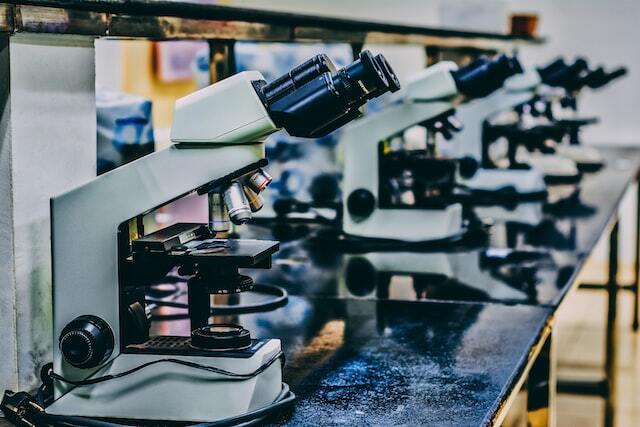Genetics and You: What is the Future of Health Insurance?

Chinese Scientist He Jiankui claims to have “created” the world’s first Gene-Edited babies.
We’ve come a long way from Dolly the Sheep.
Under every international convention on the use and practice of genetic medicine, and under most core ethical considerations of the medical profession, what Dr. He claims to be done is considered abhorrent. Yet here we are, and should the claims of the Genetic Modification of two twin embryos to effectively immunize them against HIV/AIDS prove true, this could very well be a watershed moment in human history.
This is literally the stuff of science-fiction. We’re not being figurative with that usage.
From the 1800’s with Mary Shelly’s Frankenstein and H. G. Wells’ The Island of Dr. Moreau, through to more contemporary fare in films like The Island, Blade Runner, GATTACA, and even Jurassic Park, authors and futurists have been considering the moment when someone had the audacity to actually edit the human genome.

In recent weeks there are claims that such editing has occurred – and we are nowhere near prepared to understand the ramifications of this action on society as a whole should the claims be validated, let alone the impact that this will have on insurance. Even without the news of Dr. He’s recent developments, health insurance was already being asked challenging questions about the impact of genetic testing and screening on a consumer level, and how such knowledge of potential future conditions or propensity for disease could impact medical coverage and underwriting considerations.
Genetically Designed Babies?
Wait, what?
This was essentially the reaction of most of the rest of the world when Chinese Scientist He Jiankui announced on Monday November 26th that a woman in the People’s Republic had given birth to children whom had their genome edited to protect against HIV/AIDS as embryos.

The announcement came as the Second International Summit on Genome Editing was set to kick off in Hong Kong. Needless to say, there were a lot of pretty outraged and, well, confused scientists in our city.
Why would they be confused? For starters, no one has actually confirmed whether the claims presented by He are true. On Thursday scientists at the summit called for an independent investigation on the outcome of He’s experiments, with the timing of such an investigation yet to be determined. That leaves us with two possible scenarios: either He is telling the truth, which is deeply troubling, or he’s lying and is simply a fraud.
A fraud leaves us with the status quo. The truth sets up a house of cards and an extremely uncertain future.
Before we get ahead of ourselves, we should say that genetic treatments are not wrong or new – as a species we’ve been playing the DNA of ourselves and other organisms since the 1950’s. Whether by bombarding them with radiation, or using genetic technology to develop medicines from them more efficiently, genetic manipulation is not a novel concept.
Neither is genetic therapy on children.
In fact, in the mid 90’s a form of IVF treatment actually gave implanted embryos genetic information from 3 parents. Arguably, children born from this treatment are the first “designer” babies. In fact, this treatment was recently reintroduced in the United Kingdom.
In that treatment, a single strand of the mother’s mitochondrial DNA (Deoxyribonucleic acid) is removed, and replaced with healthy DNA from an egg donor. And while there has been concern that this type of treatment could lead to true designer babies (especially in the USA where the treatment is severely restricted), this type of genetic manipulation does not alter the existing human genome. The code that makes Homo Sapiens, Homo Sapiens.
He Jiankui’s treatment, however, is different.
The Magic of CRISPR
If you haven’t heard about CRISPR then you’re in for a genuine treat – because in all honesty, this entire concept is really, really cool.

The best way to start thinking about CRISPR is to view as being to BioTech what the Silicone revolution was to Computing in the 1980’s. Our present is so fundamentally different from the 1980’s with the prevalence of technology throughout daily life, but in the grand scheme of things the transition from the analog 80’s to the digital present happened in the mere blink of an eye.
The changes which computing was seeing in the 80’s is virtually analogous to what Biotech is doing now – and CRISPR is the new “silicone.”
Assuming that you know how DNA, RNA, and the human genome is setup, it is a fairly obvious understanding that editing these tiny building blocks of life is going to be tricky, costly, and involve a fair bit of trial and error over a long period of time.
CRISPR has changed this.
With a full name of Clustered Regulatory Interspaced Short Palindromic Repeats, the technology colloquially known as CRISPR has lowered the cost barrier to genetic modification by over 99% and has dropped the time frame procedures take from almost a year to a few weeks. And with today’s technological overload, basically anyone with a proper lab and scientific background can do it.
CRISPR uses something called the Cas9 enzyme, guided by synthetic RNA into a cell nucleus (where the genetic information is kept), and cut or add DNA snippets to or from the various chromosomes being targeted.
Its probably easier to imagine this process like a giant zipper – in some places the CRISPR-Cas9 process unzips the DNA and cuts away the portion it has unzipped, and in others it may zip it up with an entirely new zipper.
The process is based off one found in nature, where bacteria evolve to fight viruses. The process that enables a bacterium to develop an immunity to a virus is, essentially, the CRISPR process – the bacteria saves a portion of the virus in its genetic code and uses that information to protect itself against future intrusions.
This is a completely natural and beneficial process, and is one of the major reasons for humanity existing today. Our symbiotic relationship with bacteria and said bacteria’s ability to develop immunity, has helped us overcome a host of illnesses and diseases which may have, historically been fatal.
We’re simplifying things a lot for the sake of expedience, but the long and the short of it is that the introduction of CRISPR technology allows us to target specific portions of DNA or RNA in whatever species and change it. Efficiently, and at low cost.
The Uncertainty with Proliferation of Genetic Technology
As neat as CRISPR is, and as many options as it affords us in treating illness, disease, and generally improving the world around us, the technology is still very much in its infancy. Your 1990’s Gameboy eventually became your 2018 cell phone.
CRISPR is still it its “Gameboy” phase.
The fact that the technology is so young means that the impact of its use is virtually unknown. Especially with respect to humans.
CRISPR and the claims of the “creation” of genetically manipulated humans is what prompted us to seriously start thinking about the impact of genetics on insurance, but it is a fairly drastic example (and we’ll deal with some of the ethical, moral, and insurance consideration of the issue a bit later). There are, however, a wealth of deceptively simple genetic technologies that pose equally troubling questions. The abundance genetic technology and tools existing in the world is actually quite staggering; and this is just on a commercial/retail level. The implications for the extent of the impact these technologies pose is highly uncertain.
What do we mean?

Take something as seemingly simple as 23andMe. On the surface it is a take home DNA test that you can use to identify your genetic ancestry. It is a wildly successful product and enables genetic testing for around US$139 per kit; you take a check swab and send the sample back to the company who then analyzes your specific genome to determine your genetic ancestry.
At the end of this, your fee gets you a nifty report that details exactly where your ancestors originated from. So, you might be an American citizen but genetically you’re Anglo-Saxon with a sizeable dose of Ashkenazi Jew. This is often really interesting information for the customer – they get the story of their genetic evolution and family, from the convenience of their own home for a reasonable fee.
At this stage it is important to note that 23andMe is just an easy example to use, and we are not implying any untoward actions on the part of the company or any of the companies we may use as examples in this post. It is also important to note that 23andMe is not alone in its proliferation of consumer-accessible genetic technology; Ancestry.com is a virtual direct competitor to 23andMe.
Then we come to the rapid growth of wellness testing. Where consumers can diagnose their DNA for exercise disposition, dietary advice, digestive and gut flora, and sensitivity to their environment. This can be extremely useful information to have – you now know, for example, that you are genetically pre-disposed to having a higher likelihood of suffering a concussion due to head contact. This would allow you to make an informed decision to avoid playing a sport like rugby.
But what if, even knowing this information, you decide that rugby is the sport for you. And you get a concussion. And now you need to see a doctor to determine how serious it is.
Is this, knowing that you are likely to get a concussion from a head injury, an increased risk to any health insurer covering the cost of your treatment? If you knew that this risk existed prior to the commencement of an insurance application, and there was no specific disclosure required for genetic knowledge, would you be voiding the coverage contract through lack of Utmost Good Faith if you did not inform the insurer? Should coverage for concussions be excluded if the individual chooses to undertake contact sports with a higher frequency of head injuries.

Why Genetics Matters to Health Insurance
Let’s be very clear before we go any further. CCW Global does not have the answer to many of the questions posed here. We are, however, extremely interested in exploring the impact that genetic technology will have on Health Insurance coverage.

In the 23andMe example given above, the individual taking the test was determined to have a genetic background that was descended from Ashkenazi Jews. While this may seem fairly innocuous, there are very real health risks for individuals with this genetic heritage.
Unfortunately, individuals who possess this genetic background are at an increased risk of being carriers of Tay-Sachs disease. The likelihood of a Tay-Sachs child being born to an individual who traces their ancestry to Ashkenazi Jews is greatly higher than people who do not have a genetic connection to that part of the world.
With this in mind, could an insurer ask for the disclosure of any genetic testing – no matter how innocent – as part of underwriting considerations? Based on this example, could the disclosure of a “riskier” genetic heritage result in different premium considerations or exclusions? Would an insurer be more likely to deny maternity or newborn child coverage to this individual?
As much similarity as this bears to the dystopian nightmare that was the 1997 movie Gattaca¸ there are very real questions which the insurance industry needs to be asking.
Insurance is defined as “the equitable exchange of a risk for an agreed fee.” But there is nothing equitable about an individual using, essentially, insider-information to hedge against a risk of which the insurer is not aware. At present there are really no explicit policy conditions or application questions which deal specifically with genetic testing – so a policyholder could argue that there was no reason to disclose the results of any genetic tests, especially if such tests are as “irrelevant” as understanding what your ancestry is.
But what about the tests that provide information which can have a real impact on your day-to-day health? A test for concussion susceptibility is available in the Hong Kong market. As we touched on above, a rugby player who had such a test performed and received results which stated that they were more likely to experience a concussion from head injuries is in a strange position; are they expected to disclose the results of this test even if they have never suffered a concussion through rugby?
And what of the individual who determines that they are especially susceptible to medical conditions caused by environmental factors? Their risk of developing a condition which requires medical treatment increases exponentially just by living in Hong Kong. Would this then make them uninsurable from a risk perspective? Or would the insurer decide to level a premium loading on any coverage because excluding “environmental factors” is going to be hard as the insurer will then need to prove that environmental causes (like heavy metals or air particulates) were not the proximate cause for any given condition.
The twin girls born through genetic engineering are at the very far end of the spectrum in this regard, but the questions that apply to hum-drum genetic testing also apply to them, and more so. Because in a fundamental regard, as their genome has been altered, are they even human? Would they be insurable under a run of the mill health insurance product, would you need to find coverage in a specialty Lloyds market, Or would a whole new class of products for genetically engineered “humans” need to be created.
If the claims of genetically engineered “humans” proves true, then does health insurance still even need to exist? If we can engineer immunity against disease, then why would we need to cover a risk against it? Would health insurance be replaced by simple personal accident products for broken bones and the like, or will we get to a place where we are able to engineer bones that don’t break? As crazy as the questions sound, recent news has shown that we are basically already at this stage and it would be silly of us as an industry not to consider the impact of science and current events on the product that we offer.
The evolution of genetic technology poses a great many questions to the concept of health insurance as a product, and the answers almost certainly won’t be easy to come by or welcome.
A hard truth that may need to be faced is that health insurance, and healthcare, may become an issue for the poor and underprivileged – because if parents with means can engineer their children to be better, faster, stronger, then why wouldn’t we do that? Unfortunately this gets us back to Gattaca, and metaphysical and existential considerations on the human condition aside, one view of the future leads to the obsolescence and extinction of personal injury and healthcare insurance products.
Health Insurance Into The Future

Health insurance exists worldwide. It is a core product in most international insurance markets, and is especially important to expatriate families and businesses looking to offer the best possible compensation packages.
In a country like Hong Kong, health insurance might not be so life-and-death like it is in the USA, but it still serves a very important place in the healthcare and insurance ecosystems.
While we may not yet be at the stage of widespread and full blown genetically engineered humans. The fact that such a claim is being made with regards to two individuals is the warning shot that the landscape of this industry is about to change. While some insurers around the world are starting to consider the request for information relating to genetic testing in applications, many insurers will be left on the back foot if change is not taken to address the impact that this technology will have on the products being offered.
From a consumer perspective while the ability to gain more detailed healthcare data on a personal level should be welcomed, especially for athletes and at-risk populations who are able to take advantage of the information being provided through retail level genetic testing applications, there are many scary outcomes which comes along with this technology. The uncertainty regarding insurability with the widespread introduction of “at-home” genetic testing may leave many individuals thinking twice about even taking such a test – after all, you cannot declare information which you don’t know. And this idea could almost certainly be influential on an individual’s willingness to take a 23andMe or Ancestry.com test.
As we stated above, CCW Global definitely doesn’t have the answers to many of these questions, or even know how the health insurance industry will react to the changing biotech landscape and the ease at which consumers can perform genetic testing (often in the comfort of their own home). But we do know that the industry is undergoing a paradigm shift along with the global healthcare market as innovations in science and technology enable humans to do things that they have never done before… including genetically engineer babies.



